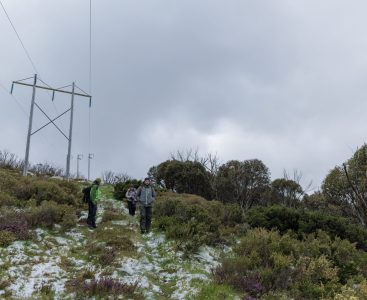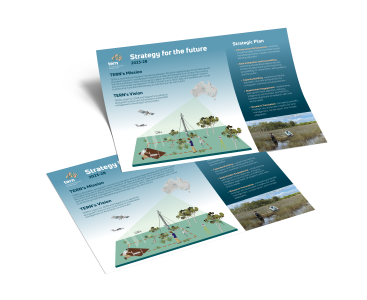News
The Heat Needle Project: an AuScope-TERN-OZCZO joint venture
November 1, 2024
Land & Terrain
In an exciting joint venture between the research infrastructure projects of AuScope, TERN and OZCZO and under the direction of Dr Graeme Beardsmore from the ...
Find out more
Director’s Update: October-November 2024
November 1, 2024
Latest News Project Office & Governance
Welcome to our October-November newsletter. The weather is warming up across Australia and so it is appropriate that the final TERN webinar for 2024 on ...
Find out more
Australian alpine researchers gather
November 1, 2024
Biodiversity Carbon & Water Data & Analytics Land & Terrain
Long-term dedication by many people is building our understanding of impact of change in fragile alpine ecosystems. During the final week of September 2024, members ...
Find out more
How to use TERN data for ecological research
October 31, 2024
Data & Analytics Land & Terrain
Analysing environmental and ecological data can be challenging. This new series of educational modules developed by TERN will help you navigate the ins and outs ...
Find out more
Director’s Update, September 2024
September 17, 2024
Biodiversity Carbon & Water Data & Analytics Land & Terrain Project Office & Governance
Welcome to our 2024 Spring TERN newsletter, which brings with it the news that TERN has been awarded CoreTrustSeal Certification. This is a significant milestone for ...
Find out more
Harmonising and unifying data for effective management of plant invasions in Australia
September 17, 2024
Biodiversity
Invasion ecologists, led by TERN’s Dr Irene Martin-Fores, have developed a workflow to integrate and harmonise terminology and information on plant invasions across federally managed ...
Find out more
Fostering Global Connections: TERN at the International Ecology School 2024
September 16, 2024
Biodiversity Data & Analytics Project Office & Governance
TERN Australia was recently privileged to participate in the International Ecology School 2024, held in South Korea from 19-26 August. The school is a fabulous ...
Find out more
Ecosystem mapping with drone remote sensing
September 16, 2024
Biodiversity Land & Terrain
TERN environmental monitoring is now regularly using Uncrewed Aerial Vehicles (often abbreviated to UAVs or drones). The TERN drone remote sensing program is a ...
Find out more
Tidal wetland monitoring
September 2, 2024
Biodiversity Carbon & Water Land & Terrain
Can tidal wetlands keep up with sea-level rise around Australia? Mangroves, salt marsh and supratidal forests are important tidal wetland ecosystems contributing a range of ...
Find out more
Director’s Update – July 2024
July 19, 2024
Latest News
Welcome to TERN Australia’s 2024 mid-winter newsletter in which we are excited to share with you our strategic plan brochure. This document provides the essential ...
Find out more
Subscribe to TERN News
Project updates, data releases, research findings, and users stories direct to your inbox.





![STILLS EXTRACT 1[12] STILLS EXTRACT 1[12]](https://www.tern.org.au/wp-content/uploads/elementor/thumbs/STILLS-EXTRACT-112-scaled-qwampudc8a6ub6lzg8shfwnfnz5tar6d1ekqf0dqwo.jpeg)










